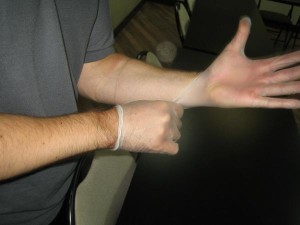
Shingles is an infection caused by the varicella-zoster virus, the same virus causing chickenpox, that appears as a painful skin rash.Chickenpox is a common viral infection in children that is very contagious and characterized by extremely itchy rashes. After having chickenpox, the virus stays in the body and remains dormant for many years. As one gets older, the virus may reactivate causing shingles. The exact cause of reactivation is not known. A person with shingles cannot spread shingles to another person, however, it can transmit the varicella-zoster virus to a person who has never had chickenpox, causing the person to develop the latter infection.
The symptoms from shingles may last from weeks to months. It commonly occurs in older adults with weak immune systems due to stress, injury, particular medications and other causes.There is no cure for this non-fatal disease. The best treatment for shingles is early treatment with proper medications. A vaccine is generally recommended for elders over 60 years age to prevent shingles or reduce its effects. In most cases of shingles, it does not recur. Shingles is also called herpes zoster.
Signs and Symptoms of Shingles
The signs and symptoms of shingles occur in stages and the appearance of symptoms is usually as follows:
- Headache and photosensitivity
- Tingling, itching, burning or pain in a particular area
- After a few days, a strip or band of rashes occur*
- Typically in either side of the torso or in the face
- Rashes progress into cluster of fluid-filled blisters, which will eventually break open and crust over
- Other symptoms: dizziness, weakness, fever and chills
*Not all cases develop rashes, sometimes rashes are also mild
Complications of Shingles
Symptoms typically last for 2-4 weeks, however, if complications develop, it will prolong healing period. Some of the complications that can arise from shingles include:
- Long-term rashes in the face
- Bacterial infections
- Postherpetic neuralgia: chronic pain after other symptoms have disappeared
- Changes in vision
- Neurological problems
Treatment and Management for Shingles
As previously mentioned, there is no permanent cure for shingles. Treatment will require early treatment with proper medication and appropriate home management to avoid development of complications.
- Antiviral medications are usually prescribed.
- To treat intense pain, anticonvulsants, antidepressants, numbing agents and other medications are usually prescribed by the doctor.
- Antihistamines may also be prescribed to reduce itching. Application of topical calamine lotion may also help.
- Take cool baths or apply cool, wet compresses on the blisters to ease itching and pain. Keep the skin and any sores clean.Bathing in oatmeal bath products may also relieve symptoms.
- Wear loose and light bedclothes toavoid skin irritation. Exposure to extreme heat and humidity may also lead to skin irritation.
- If there is fever, take plenty of rest.
The key for speedy recovery in shingles is early recognition. First Aid Courses and CPR teaches recognition of symptoms of a variety of conditions that may lead to life-threatening complications and medical emergencies. Knowing how to apply first aid can reduce symptoms and discomfort brought about by a variety of medical conditions and infections, including shingles.
